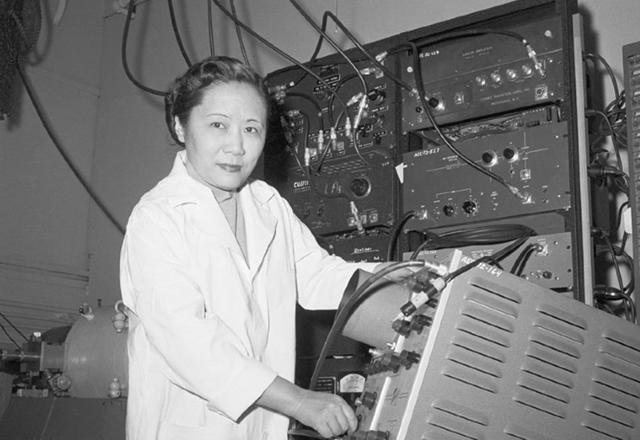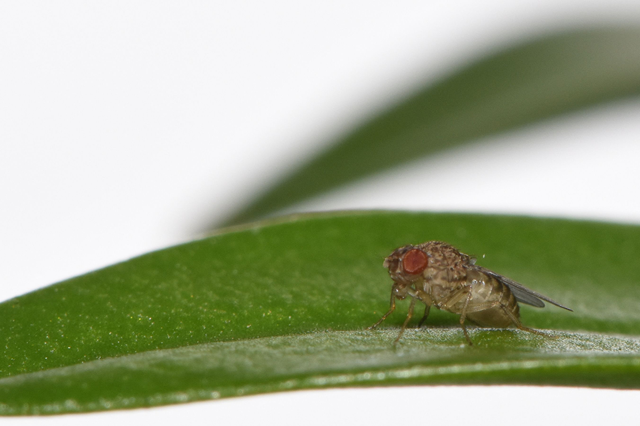You are here
The women scientists forgotten by history
By AFP - May 07,2022 - Last updated at May 07,2022

Chinese-American physicist Chien-Shiung Wu (AFP photo)
By Isabelle Tourne
Agence France-Presse
PARIS — French doctor and researcher Marthe Gautier, who died last weekend, was one of a long line of women scientists who greatly contributed to scientific discovery only to see the credit go to their male colleagues.
Here are just a few of the women scientists whose work was forgotten by history.
Marthe Gautier
Gautier, who died at the age of 96 on Saturday, discovered that people with Down’s syndrome had an extra chromosome in 1958.
But when she was unable to identify the exact chromosome with her lower-power microscope, she “naively” lent her slides to geneticist Jerome Lejeune, she told the Science journal in 2014.
She was then “shocked” to see the discovery of the extra chromosome 21 published in research six month later, with Lejeune’s name first and hers second — and her name misspelled.
It was not until 1994 that the ethics committee of France’s INSERM medical research institute said Lejeune was unlikely to have played the “dominant” role in the discovery.
Rosalind Franklin
British chemist Rosalind Franklin’s experimental work led to her famous 1952 X-ray image “Photo 51”, which helped unlock the discovery of the DNA double helix.
But Francis Crick and James Watson were working on a similar theory at the time, and their research was published ahead of Franklin’s in the same journal, leading many to think her study merely supported theirs.
Crick and Watson won the Nobel Prize for Medicine for the discovery in 1962 — Franklin had died four years earlier at the age of just 37.
In a letter from 1961 that emerged in 2013, Crick acknowledged the importance of her work in determining “certain features” of the molecule.
Jocelyn Bell Burnell
British astrophysicist Jocelyn Bell Burnell discovered the first radio pulsars when she was a postgraduate student in 1967.
But it was her thesis supervisor and another male astronomer who won 1974’s Nobel Prize in Physics for the discovery.
Lise Meitner
Austrian-Swedish physicist Lise Meitner was one of the key people responsible for discovering nuclear fission, leading to Albert Einstein dubbing her the “German Marie Curie”.
However it was her long-term collaborator Otto Hahn who won the 1944 Nobel Prize in Chemistry for the discovery.
Chien-Shiung Wu
Chinese-American physicist Chien-Shiung Wu worked on the Manhattan Project and conducted the “Wu experiment”, which overturned what had been previously considered a fundamental law of nature — the conservation of parity.
But again it was her male colleagues who won the 1975 Nobel Physics prize for the research.
Her work earned her the nickname “Chinese Madame Curie”.
And so on
The list could go — and the women scientists named above are merely those whose contributions have been belatedly recognised decades later.
The contributions of male scientists’ wives, mothers and daughters are also believed to have long been overlooked, including that of Einstein’s first wife, mathematician and physicist Mileva Maric.
In 1993 American historian Margaret Rossiter dubbed the systematic suppression of women’s contributions to scientific progress the “Matilda effect”, after US rights activist Matilda Joslyn Gage.
Even today the role played by women in scientific history is under-represented in school textbooks, French historian Natalie Pigeard-Micault told AFP.
“It gives the impression that scientific research is limited to a handful of women,” she said, pointing to how Marie Curie was always an “exceptional” reference point.
Related Articles
AMMAN — Despite their relatively modest contributions to scientific research locally and internationally, women have what it takes to excel,
STOCKHOLM — The Nobel Museum in Stockholm has been gifted Albert Einstein's first paper published after he received the Nobel Prize in 1922
PARIS — Scientists said on Friday they have genetically engineered female fruit flies that can have offspring without needing a male,


















